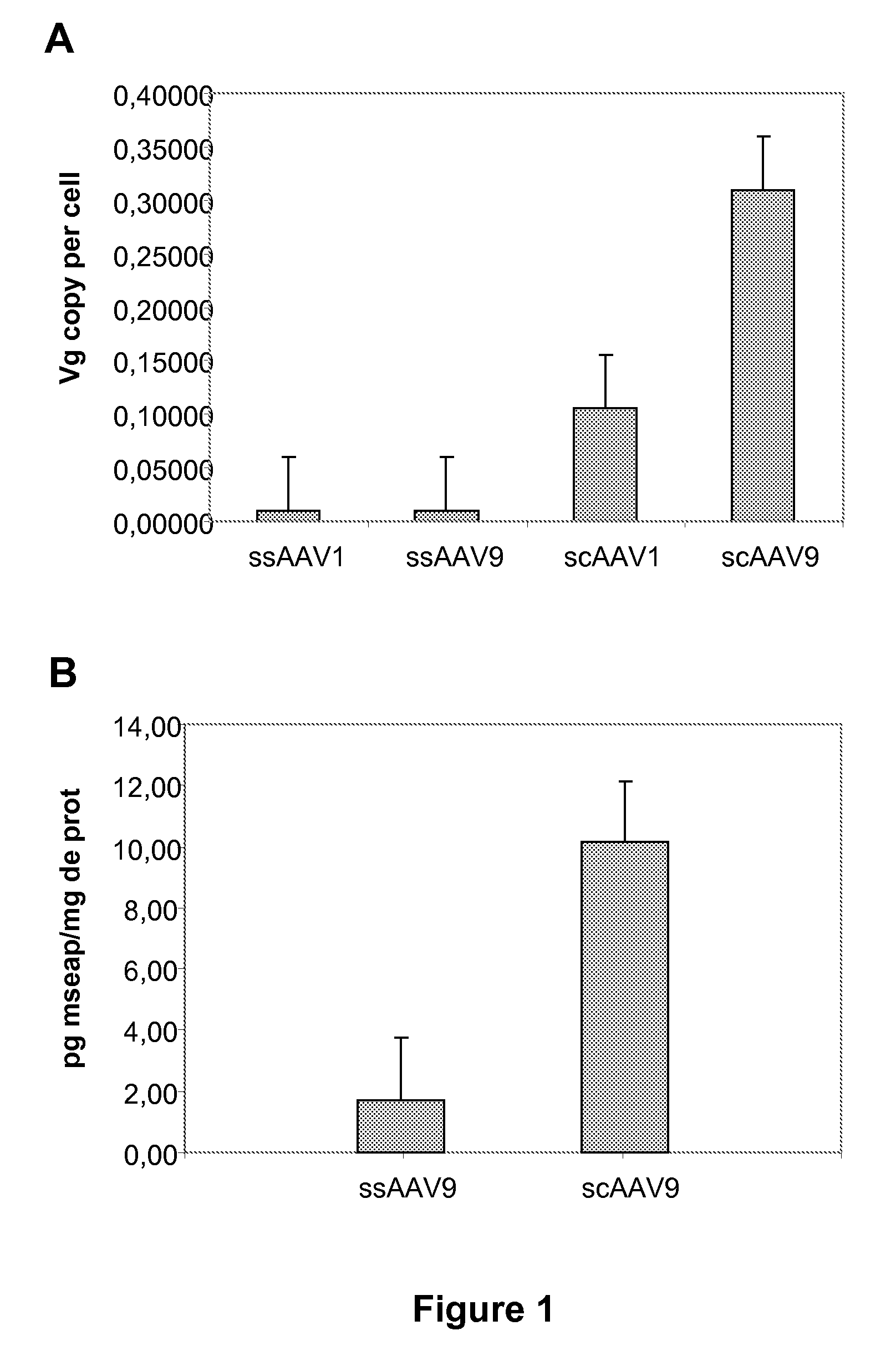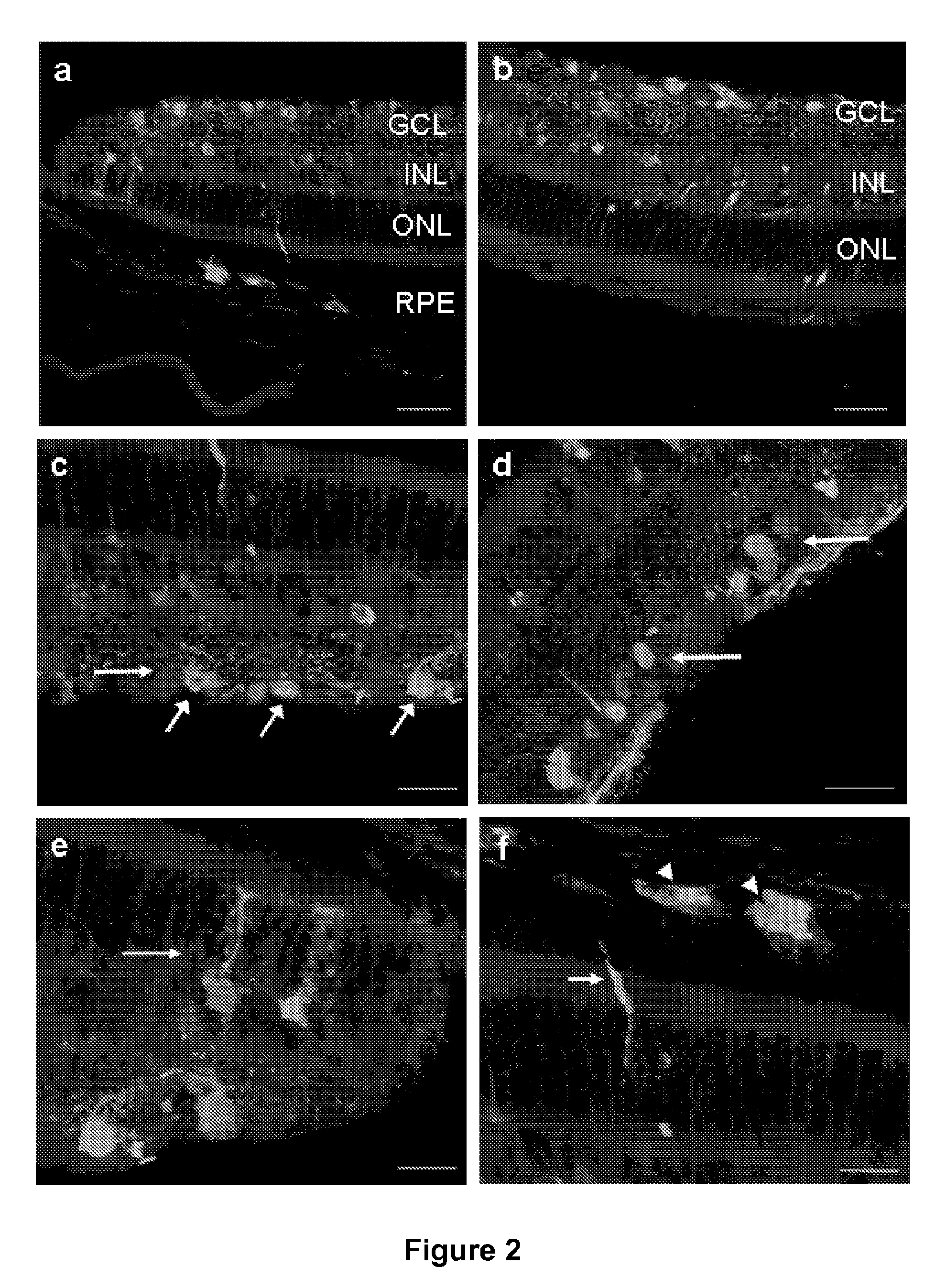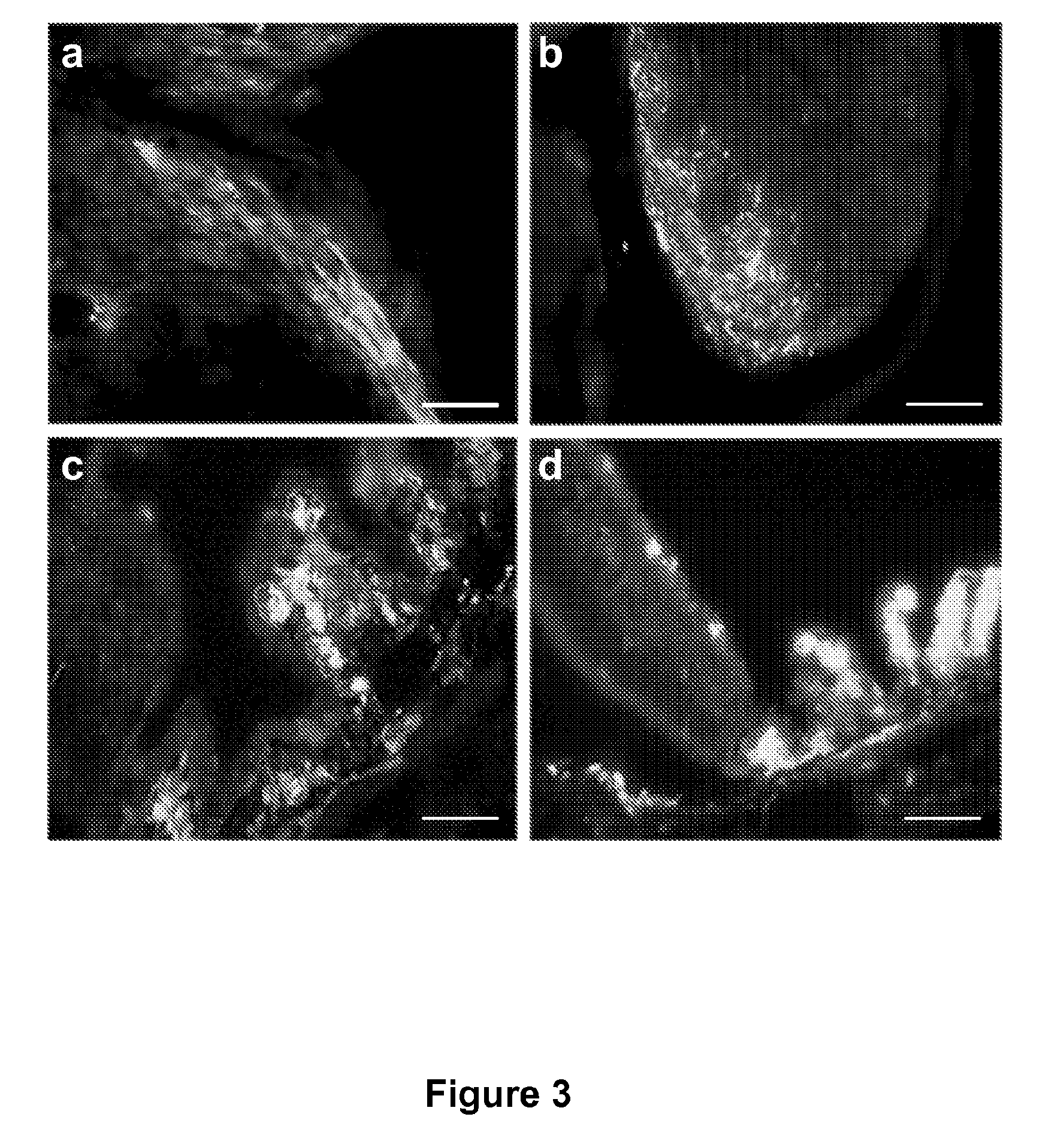Widespread gene delivery to the retina using systemic administration of AAV vectors
a technology of aav and gene delivery, applied in the direction of genetic material ingredients, biocide, drug composition, etc., can solve the problems of invasive nature of direct administration route, retinal barrier, and subsequent localized trauma inducing retinal thinning and cell destruction, and achieve high level of gfp and efficient transduction of ganglion
- Summary
- Abstract
- Description
- Claims
- Application Information
AI Technical Summary
Benefits of technology
Problems solved by technology
Method used
Image
Examples
examples
Materials and Methods
[0088]Animals
[0089]Adult C57Bl / 6 mice (6 to 8 weeks old, female, 16 mice) were purchased from Charles River Laboratories (Les Oncins, France). All animal experiments were carried out according to European guidelines for the care and use of experimental animals and were approved by the regional ethics committee (CREEA).
[0090]Vectors
[0091]AAV vectors express green fluorescent protein (GFP) or mouse secreted alkaline phosphatase (mSEAP) under the control of the cytomegalovirus immediate early (CMV) promoter. Production of serotype 9 AAV has been previously described (Duque et al., 2009). Briefly, pseudotyped AAV2 / 9 vectors were generated by packaging AAV2-based recombinant single stranded (ss) or self-complementary (sc) genomes into AAV9 capsids. The vectors were produced by helper virus-free, three-plasmid transfection, in HEK293 cells, using (1) the adenovirus helper plasmid (pXX6-80) (2) the AAV packaging plasmid encoding the rep2 and cap1 or 9 genes (pLTRCO2 fo...
PUM
| Property | Measurement | Unit |
|---|---|---|
| size | aaaaa | aaaaa |
| volume | aaaaa | aaaaa |
| compositions | aaaaa | aaaaa |
Abstract
Description
Claims
Application Information
 Login to View More
Login to View More - R&D
- Intellectual Property
- Life Sciences
- Materials
- Tech Scout
- Unparalleled Data Quality
- Higher Quality Content
- 60% Fewer Hallucinations
Browse by: Latest US Patents, China's latest patents, Technical Efficacy Thesaurus, Application Domain, Technology Topic, Popular Technical Reports.
© 2025 PatSnap. All rights reserved.Legal|Privacy policy|Modern Slavery Act Transparency Statement|Sitemap|About US| Contact US: help@patsnap.com



